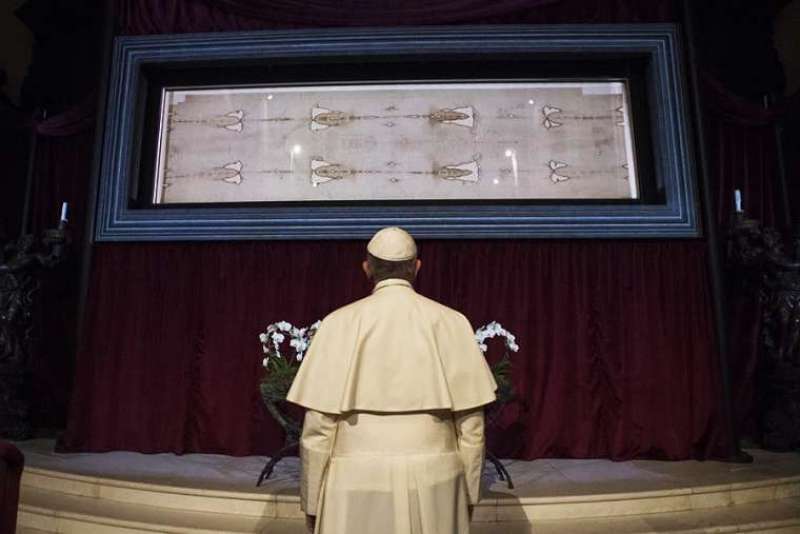Scientific photos of Shroud of Turin published

Denver, Colo. (CNA) – A new website aims to make available to Catholics and researchers a collection of photographs of the Shroud of Turin by a scientific photographer who was part of a research project that spent more than one hundred hours conducting tests on the shroud.
The Shroud of Turin is a linen cloth 14 feet 5 inches long by 3 feet 7 inches wide, which shows the image of a man tortured and crucified. It is held by many Catholics to be the burial cloth that wrapped the body of Jesus after his death on the cross.
From 1977 to 1981, a team of physicists, chemists, pathologists, and engineers from universities and U.S. government laboratories conducted the Shroud of Turin Research Project, which concluded that “the shroud image is that of a real human form of a scourged, crucified man. It is not the product of an artist. The blood stains are composed of hemoglobin and also give a positive test for serum albumin. The image is an ongoing mystery and until further chemical studies are made, perhaps by this group of scientists, or perhaps by some scientists in the future, the problem remains unsolved.”
The project’s final report added that “no pigments, paints, dyes or stains” were found on the shroud’s fibers, adding that “it is clear that there has been a direct contact of the Shroud with a body, which explains certain features such as scourge marks, as well as the blood. However, while this type of contact might explain some of the features of the torso, it is totally incapable of explaining the image of the face with the high resolution that has been amply demonstrated by photography.”
“The scientific consensus is that the image was produced by something which resulted in oxidation, dehydration, and conjugation of the polysaccharide structure of the microfibrils of the linen itself. Such changes can be duplicated in the laboratory by certain chemical and physical processes. A similar type of change in linen can be obtained by sulfuric acid or heat. However, there are no chemical or physical methods known which can account for the totality of the image, nor can any combination of physical, chemical, biological or medical circumstances explain the image adequately.”
Vernon Miller was the official scientific photographer of the Shroud of Turin Research project. His photographs and magnified micrographs of various aspects of the shroud are now freely available to view or download at shroudphotos.com. Photographs taken under ultraviolet light are also available for download. Organizers of the site say that it was Miller’s wish that his photograph is digitized and made available to those who have never seen them. The site is the first place to publish a digitized and organized catalog of Miller’s work.
Miller recognised the power of images of the shroud.
“Worldwide interest in the Shroud of Turin was stimulated by the first photographs of it in 1898 when photography was in its infancy. Up to that time, people who looked at the cloth found it faint. It took the camera, with its negative image [of the man], to appreciate it,” he said after the research project was completed.
The shroud has been in Turin, Italy since 1578, has been the subject of thousands of scientific investigations from diverse specialties, and more than 32,000 photographs have been taken of it. The Church’s official position on the shroud is one of neutrality.



I visited the Shroud at its 2010 exposition. I found it less compelling than its negative photos which is itself an argument in favour of a miraculous origin.